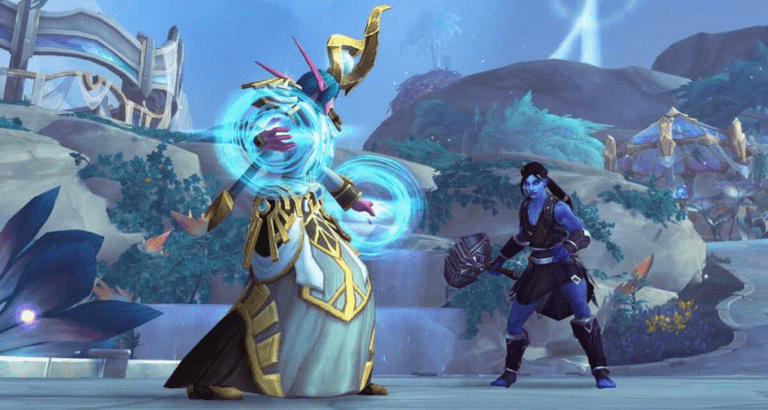Takeaway
Virtual World Game Create represents a paradigm shift in game development, merging creativity with advanced technologies such as artificial intelligence, augmented reality, and blockchain. This article delves into the intricate mechanics of this innovative platform, exploring its implications for game design, user engagement, and the future of interactive entertainment.
Introduction
The gaming industry has witnessed a remarkable evolution over the past few decades, transitioning from simple 2D graphics to immersive 3D environments and now to virtual worlds that blend reality with digital experiences. Virtual World Game Create (VWGC) stands at the forefront of this evolution, offering a platform that empowers users to create, share, and monetize their virtual experiences. This article explores the technical underpinnings of VWGC, its creative potential, and its implications for the future of gaming.
The Technical Framework of Virtual World Game Create
At its core, VWGC is built on a robust technical framework that integrates several cutting-edge technologies. The platform leverages cloud computing, artificial intelligence (AI), and blockchain to create a seamless user experience.
Cloud Computing
Cloud computing serves as the backbone of VWGC, enabling real-time collaboration and storage. According to a report by Gartner (2022), the global cloud gaming market is projected to reach $8.5 billion by 2025, driven by the demand for high-quality gaming experiences without the need for expensive hardware. VWGC utilizes cloud infrastructure to allow users to create and access their virtual worlds from any device, fostering a community of creators and players.

Artificial Intelligence
AI plays a pivotal role in enhancing user experience within VWGC. Machine learning algorithms analyze user behavior to personalize content and recommend design elements. For instance, AI-driven procedural generation techniques can create unique landscapes and environments based on user preferences, significantly reducing the time required for world-building. A study by the International Journal of Computer Games Technology (2021) found that AI-generated content can increase player engagement by up to 30%.
Blockchain Technology
Blockchain technology is another cornerstone of VWGC, providing a decentralized platform for asset ownership and monetization. By utilizing non-fungible tokens (NFTs), creators can tokenize their virtual assets, ensuring authenticity and ownership. According to NonFungible.com, the NFT market reached a valuation of $10.7 billion in 2021, highlighting the growing interest in digital ownership. VWGC allows users to buy, sell, and trade their creations securely, fostering a vibrant economy within the virtual world.
Creative Potential of VWGC
The creative potential of VWGC is vast, enabling users to design everything from simple games to complex simulations. The platform provides a suite of tools that cater to both novice and experienced developers, including drag-and-drop interfaces, scripting capabilities, and asset libraries.
User-Generated Content
User-generated content (UGC) is a driving force behind the success of VWGC. By empowering users to create their own experiences, the platform fosters a sense of community and collaboration. A report by Newzoo (2022) indicates that 70% of gamers prefer playing user-generated content over traditional games, underscoring the demand for creative freedom in gaming.
Real-World Examples
Several successful games have emerged from user-generated content platforms, demonstrating the potential of VWGC. For instance, Roblox, a platform that allows users to create and share games, reported over 202 million monthly active users in 2021, with a staggering 40 million user-generated games available. Similarly, Fortnite’s Creative mode has enabled players to design their own maps and game modes, contributing to the game’s sustained popularity.
Implications for Game Design
The integration of advanced technologies in VWGC has profound implications for game design. Traditional game development often involves lengthy production cycles and significant financial investment. In contrast, VWGC democratizes game development, allowing anyone with a creative vision to bring their ideas to life.
Rapid Prototyping
With the tools provided by VWGC, developers can rapidly prototype their ideas, test gameplay mechanics, and iterate based on user feedback. This agile approach to game design not only accelerates the development process but also enhances the quality of the final product. A survey conducted by the Game Developers Conference (GDC) in 2022 revealed that 65% of developers believe that rapid prototyping leads to more innovative game designs.

Community-Driven Development
The community-driven nature of VWGC fosters collaboration among creators. Developers can share assets, scripts, and ideas, leading to a more dynamic and diverse gaming ecosystem. This collaborative approach mirrors trends seen in open-source software development, where community contributions lead to rapid advancements and innovation.
User Engagement and Retention
User engagement is critical for the success of any gaming platform. VWGC employs several strategies to enhance user retention and satisfaction.
Gamification Elements
Incorporating gamification elements such as rewards, achievements, and leaderboards can significantly boost user engagement. A study by the Journal of Interactive Marketing (2021) found that gamification can increase user retention rates by up to 50%. VWGC utilizes these elements to encourage users to explore, create, and share their virtual worlds.
Social Interaction
Social interaction is another key factor in user engagement. VWGC facilitates communication and collaboration among users through integrated chat features, forums, and social media sharing options. According to a report by Statista (2022), 80% of gamers prefer playing with friends, highlighting the importance of social connectivity in gaming experiences.
The Future of Virtual World Game Create
The future of VWGC is promising, with ongoing advancements in technology and user engagement strategies. As virtual reality (VR) and augmented reality (AR) technologies continue to evolve, VWGC is poised to integrate these immersive experiences into its platform. A report by IDC (2023) predicts that the global AR and VR market will reach $198 billion by 2025, indicating a growing demand for immersive gaming experiences.
Emerging Trends
Several emerging trends are likely to shape the future of VWGC. These include:
- Cross-Platform Play: As gaming becomes increasingly interconnected, cross-platform play will allow users to create and share experiences across different devices.
- AI-Driven Content Creation: The use of AI in content creation will continue to evolve, enabling more sophisticated and personalized gaming experiences.
- Enhanced Monetization Models: As the virtual economy grows, new monetization models will emerge, allowing creators to earn revenue from their virtual assets.
Conclusion
Virtual World Game Create represents a significant advancement in the gaming industry, merging creativity with cutting-edge technology. By leveraging cloud computing, AI, and blockchain, VWGC empowers users to create, share, and monetize their virtual experiences. The platform’s emphasis on user-generated content, rapid prototyping, and community-driven development fosters innovation and engagement. As the gaming landscape continues to evolve, VWGC is well-positioned to lead the charge into a new era of interactive entertainment.
In summary, VWGC not only democratizes game development but also enhances user engagement through social interaction and gamification. The future of this platform is bright, with emerging technologies poised to further enrich the virtual world experience. As we look ahead, it is clear that VWGC will play a pivotal role in shaping the future of gaming.

